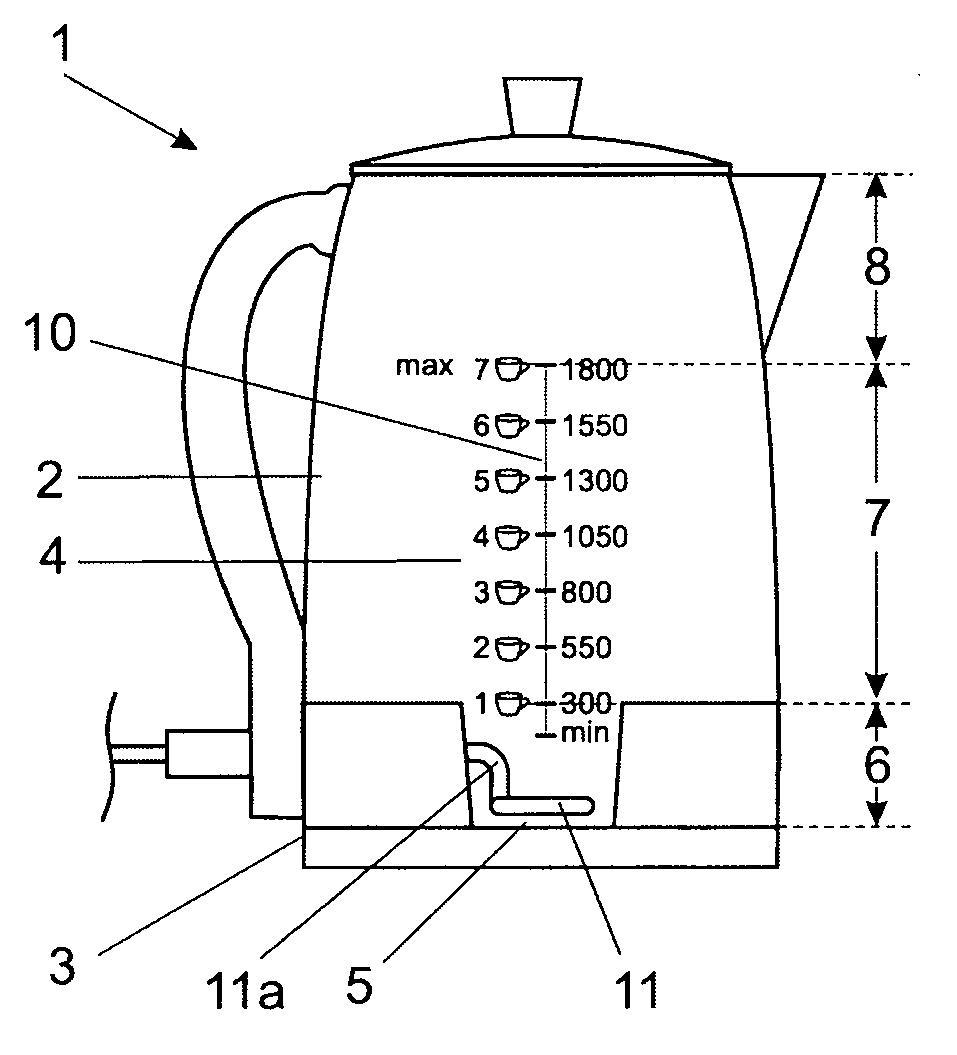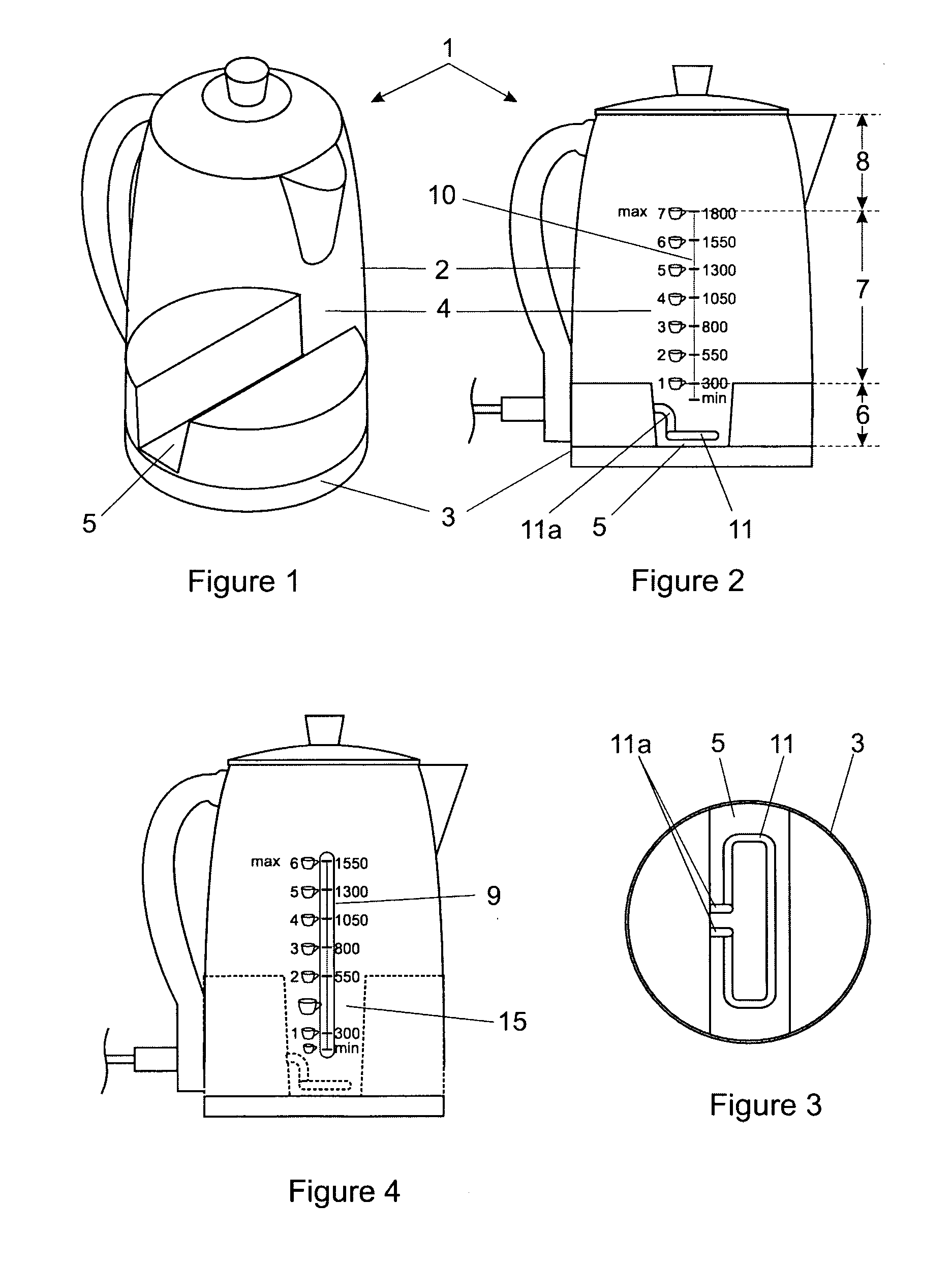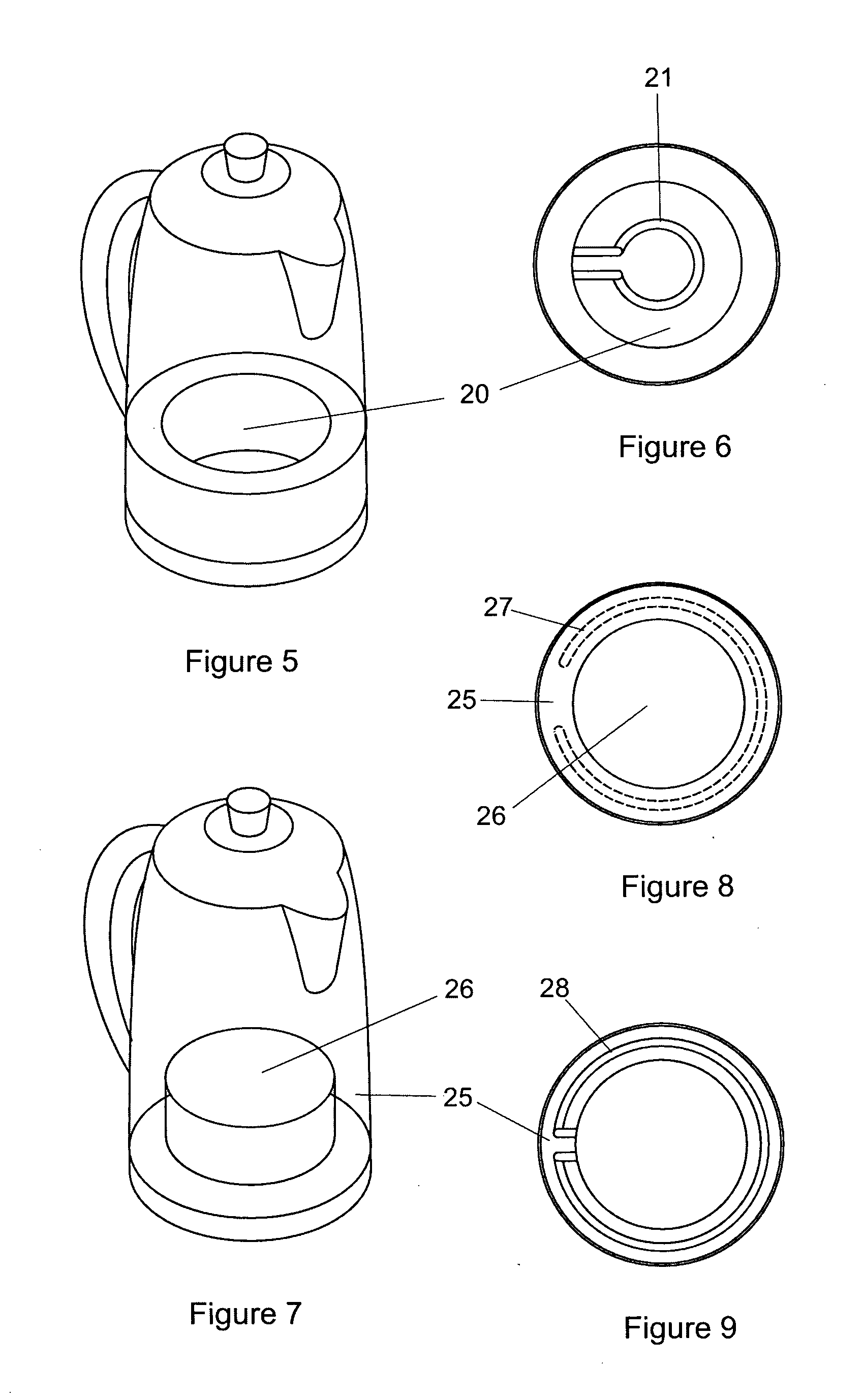Kettle
a technology of electric kettles and kettles, applied in the field of electric kettles, can solve the problems of more complex appliances, more cumbersome proposals, and difficulty in filling an average kettle to exactly the minimum level
- Summary
- Abstract
- Description
- Claims
- Application Information
AI Technical Summary
Benefits of technology
Problems solved by technology
Method used
Image
Examples
Embodiment Construction
[0030]In the embodiment of the invention in FIGS. 1 to 3 a kettle (1) has a body (2) with a lowermost outer periphery (3), and a water chamber (4) inside the body. The water chamber has a bottom (5), a lower region immediately above the bottom indicated by numeral (6), a central region indicated by numeral (7) terminating in an upper maximum recommended operating volume, and an upper region indicated by numeral (8) constituting a head space.
[0031]The water chamber, in this embodiment of the invention, has a maximum operating volume of from 1.5 to 1.8 litres of water; that is the combined volumes of the lower (6) and central (7) regions of the body.
[0032]In practice, the body wall could be made of transparent material such as glass, as is the instance of the embodiment illustrated in FIG. 2, or it could have a window (9) as in the instance illustrated in FIG. 4 through an otherwise opaque body wall. As a further alternative an open topped, generally upright transparent tube communica...
PUM
 Login to View More
Login to View More Abstract
Description
Claims
Application Information
 Login to View More
Login to View More - R&D
- Intellectual Property
- Life Sciences
- Materials
- Tech Scout
- Unparalleled Data Quality
- Higher Quality Content
- 60% Fewer Hallucinations
Browse by: Latest US Patents, China's latest patents, Technical Efficacy Thesaurus, Application Domain, Technology Topic, Popular Technical Reports.
© 2025 PatSnap. All rights reserved.Legal|Privacy policy|Modern Slavery Act Transparency Statement|Sitemap|About US| Contact US: help@patsnap.com



